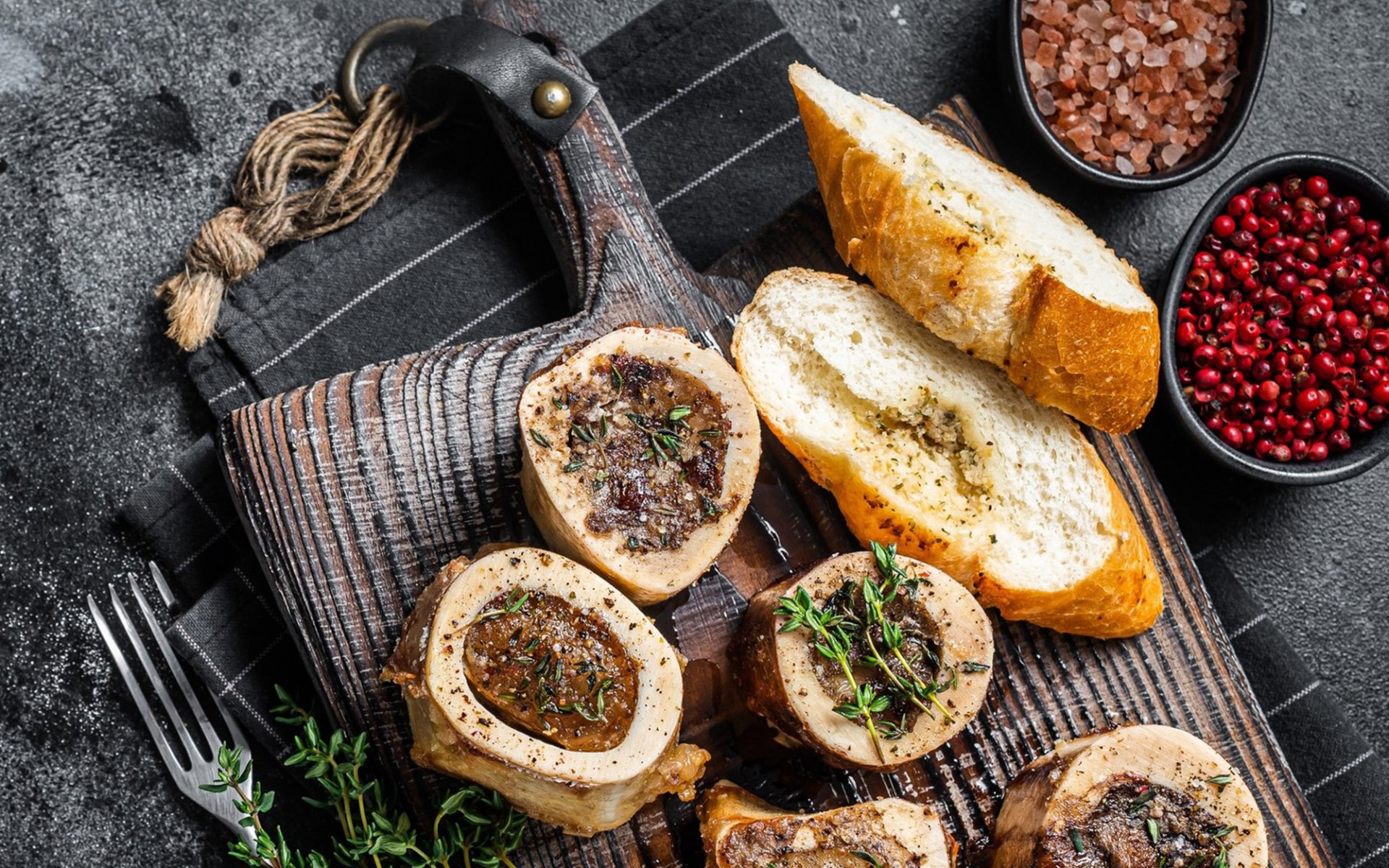Bone Marrow

Why should we eat bone marrow when there's so much food in the world? Many might ask this question, but did you know that cooking with bone marrow has a long history, dating back to prehistoric times? It's said that bone marrow was a valuable food source for cave dwellers in the past. Archaeologists have found evidence that humans consumed bone marrow as food as far back as 400,000 years ago during the Stone Age.
Ancient Preservation: The Original "Bone Marrow Butter"
In that era, after hunting and consuming animals immediately, humans also preserved the meat covering the bones before cutting, crushing, and extracting the bone marrow later. Experiments have shown that hide and bone helped preserve the taste and nutrients of bone marrow for weeks. It's speculated that this method might even be the oldest food preservation technique in the world.
Nutritional Powerhouse: Why Bone Marrow Is Good for You
Bone marrow is a soft fat found in the bones of animals like cows, sheep, and pigs. It's located in the central cavity of long bones, such as femurs and humeri. Many may not realize that bone marrow is an excellent source of numerous beneficial nutrients for the body. There's a common misconception that eating bone marrow makes you fat, but in reality, consuming bone marrow isn't entirely detrimental to health. Besides fat and protein, bone marrow is rich in collagen, which helps fight free radicals, promotes healthy skin, makes your complexion radiant, and helps prevent premature aging.
Bone Marrow Across Cultures: A Culinary Journey
With these myriad benefits, bone marrow has now become a delicacy in many cultures and is gaining popularity among chefs and food enthusiasts. They've discovered the unique flavor of bone marrow and transformed it into a variety of dishes:
Osso Buco (Italy): A traditional Italian dish made from slow-braised beef shanks (meat attached to the bone), allowing both the meat and the bone marrow to be savored a truly enticing dish.
Pot-au-feu (France): In this French beef and vegetable stew, chefs often add bone marrow to the soup to enhance its rich, aromatic flavor. The French also enjoy spreading bone marrow on bread, sprinkling it with salt and pepper, and eating it for breakfast.
Hochzeitssuppe (Germany): Germany also boasts a famous bone marrow soup called Hochzeitssuppe. The special feature of this soup is the use of bone marrow molded into meatballs, known as Markklößchen, which are slow-cooked in hot soup until fragrant. It's traditionally served to newlyweds on their wedding day and as an appetizer for guests attending the ceremony.
Asia (China, India, Pakistan, Thailand): In China, people commonly crush one or both ends of pork shin bones and simmer them in soup. Once cooked, chopsticks are used to extract the bone marrow separately, or some restaurants even provide special straws for sucking out the rich fat from the bones. In India, Pakistan, and Thailand, bone marrow is also popular in slow-cooked soups, often found in noodle soups or general bone broths. The richness of bone marrow makes the soup incredibly flavorful, truly stimulating our taste buds.
The exquisite taste of bone marrow captivated Anthony Bourdain, the late American chef and food traveler, who once spoke about bone marrow on his television show. He described its smooth, rich, melt-in-your-mouth texture as a rare delight, even going so far as to call bone marrow the "Butter of gods."
"If God made butter it would taste exactly like bone marrow." - Anthony Bourdain


